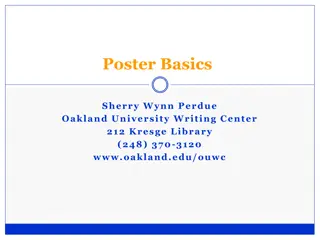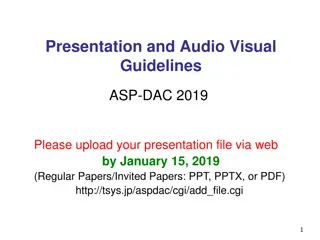Addressing Protection Gaps for Unaccompanied Minors in Greece
Legal frameworks at the international and national levels provide guidelines for the protection of unaccompanied minors in Greece. However, gaps exist in access to safe accommodation, guardianship, education, and healthcare. The situation update reveals the number of unaccompanied children in different types of accommodation as of October 2020, highlighting ongoing challenges and the need for improved support systems.
Download Presentation

Please find below an Image/Link to download the presentation.
The content on the website is provided AS IS for your information and personal use only. It may not be sold, licensed, or shared on other websites without obtaining consent from the author.If you encounter any issues during the download, it is possible that the publisher has removed the file from their server.
You are allowed to download the files provided on this website for personal or commercial use, subject to the condition that they are used lawfully. All files are the property of their respective owners.
The content on the website is provided AS IS for your information and personal use only. It may not be sold, licensed, or shared on other websites without obtaining consent from the author.
E N D
Presentation Transcript
The situation of unaccompanied minors in Greece Eva TZAVALA Researcher, Athens Public International Law Center, NKUA Legal Officer, Greek National Commission for Human Rights VIEDRINA WORKSHOP, 16 NOVEMBER 2020
Legal framework United Nations system: Convention on the Rights of the Child, ratified by Greece in 1993. In addition, Greece has ratified all major UN HR treaties: Genocide Convention, ICERD, ICCPR, ICESCR, CEDAW, CAT, CRPD, ICPPED Council of Europe: European Convention on Human Rights, Revised European Social Charter, Lanzarote Convention CEAS: EU Directives 2011/95 on qualification, 2013/32 on asylum procedures, 2013/33 on reception conditions (transposition into the Greek legal order by P.D. 141/2013, L. 4375/2016 and L. 4540/2018 respectively) Main national framework: Codifying Law 4636/2019 on International Protection (as amended by L. 4686/2020)
Protection gaps (1) Access to safe accommodation: (un)safe zones in hotspots, protective custody in Police Departments equals to detention, homelessness. Exposed to high safety risks (violent incidents, exploitation and trafficking). Appointment of a guardian: The new state guardianship system providing for professional guardians is still pending (2 years since the adoption of Greek Law 4554/2018). Asylum procedures: Most applications for international protection of UAMs are examined under accelerated or border procedure. Procedural safeguards ? No guardian. No legal advisor. No social services.
Protection gaps (2) Access to education: L. 4636/2019 provides for an obligation (!) to get enrolled in public schools with a penalty of reduction of material reception conditions. Occasionally or no access to formal education (esp. in times of Covid-19) Access to health care: a legal limbo for several months for all asylum seekers (social security number vs health security number) however L. 4368/2016 provides for free access t public health services and free nursing and health care to uninsured persons, including asylum seekers/refugees and members of their families
Situation Situation Update: Unaccompanied Unaccompanied Children Update: Children (UAC) (UAC) in in Greece Greece KeyFacts National Center for SocialSolidarity 2724 children in longterm or temporary accommodation 148* children inRICs 166* children inProtective custody 187* children in Open temporary accommodation facilities 31 October2020 Number of UAC per accommodationtype 31 January 2020 31 October 2020 UAC analysis per accommodation type Total: 3225 persons SIL 169 1367 1404 1420 1421 1435 1426 Shelters 1411 1477 1485 1506 1538 1520 1508 1483 1528 1028* children inInsecure housing conditions 736 698 1534 1550 641 Hotels 775 1580 568 1501 570 584 1513 579 589 624 644 649 Safezones 368 756 783 699 *The above numbers include 206 separated children,and 255pending transferto long term or temporary accommodation 624 1063 1164 1144 1146 Emergency UAC accommodation sites 1 0 of which pending transfer 3360 3227 3249 3322 3318 3185 3043 2954 2768 2661 2515 Open temporary accommodation facilities 2352 2292 2284 2243 187 1820 1557 1531 1541 18 of which pending transfer Reception and Identification Centers 148 4253 children in total outof which: 92,8%Boys 7,2%Girls 8,4% <14 yearsold 120 of which pending transfer 166 Protective custody 56 of which pending transfer Out of long term or temporaryaccommodation 255 of which pendingtransfer In temporaryaccommodation In long term accommodation Additionally, 1028 UAC (61 of which pending transfer)have been reportedas living in informal/insecure housing conditions such as living temporarily in apartments with others, living in squats, being homeless and moving frequently between different types of accommodation. The above number includes 30 UAC with no location reported by the referralagent. EKKA is in the process of updating this information. Number of UAC in Reception and Identification Centers/Protective Custody 31 January 2020 31 October 2020 Number of places 1873 Total number ofplaces in long term accommodation (Shelters/SIL) 1681 Total number of places in temporary accommodation (Safe zones/Emergency hotels/Emergency AccommodationSites) 187717901752 1654 1637 15671501 143113351233 11181002904 900 830120 of which pending transfer 402 56 of which pending transfer 331 298 276 274 226 223 239 272 206 229 229 176166 178 193 205 195 187 204120 148 134 With supportfrom: Figures dynamically change and may be adjusted based on verification by EKKA. All figures are based on referrals. Reception and IdentificationCenters Protectivecustody
Emergency responses When there is a will, there is a way! No child alone initiative by the Greek PM: relocation of UAMs from the overcrowded camps in the Aegean Islands to shelters in mainland Greece no unaccompanied minor in hotspots Solidarity by EU partners: relocation of unaccompanied children and children with severe medical conditions and other vulnerabilities with their families from Greece to other EU Member States (voluntary scheme)
Durable solutions Protection of UAMs: too little too late? BEST INTERESTS ASSESMENT Facilitation of family reunification cases (relatives in the same country, other EU countries, countries of origin) Adoption of early integration measures of UAMs asylum seekers into local communities (long-term small accommodation facilities, foster care, supported independent living, effective access to primary, secondary and high education, vocational training, language courses)























